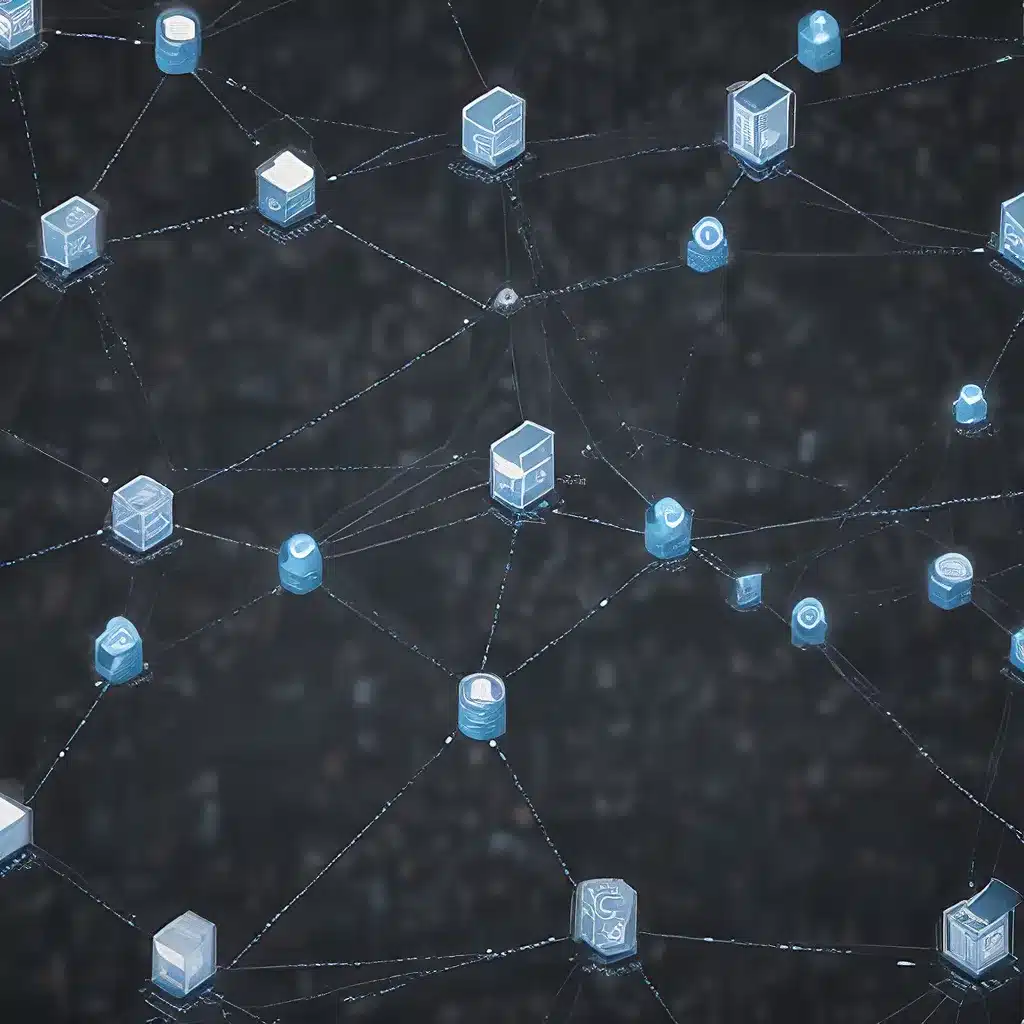
Understanding the Challenges in Sensor Network Design
As the Internet of Things (IoT) continues to permeate our daily lives, the role of sensor networks has become increasingly crucial. These networks, composed of interconnected sensor nodes, enable the collection, processing, and transmission of vast amounts of data from the physical world. However, the design and deployment of effective sensor networks pose several challenges that must be addressed to realize the full potential of IoT applications.
One of the primary challenges in sensor network design is the need for efficient data aggregation. Sensor nodes often generate large volumes of data, which can quickly overwhelm the network’s bandwidth and computational resources if not properly managed. Traditional centralized approaches to data aggregation can be inefficient and create bottlenecks, particularly in large-scale, distributed sensor networks.
Distributed consensus algorithms have emerged as a promising solution to address these challenges. These algorithms enable cooperative data aggregation, where sensor nodes work together to reach a shared understanding of the sensed data, without the need for a centralized coordination point.
Distributed Consensus Algorithms: Achieving Cooperative Data Aggregation
Distributed consensus algorithms rely on the principle of decentralized decision-making. Instead of a single, centralized authority managing the data aggregation process, sensor nodes in the network collaborate to reach a collective agreement on the sensed data.
This approach offers several advantages over traditional centralized methods:
-
Scalability: Distributed consensus algorithms can effectively handle large-scale sensor networks, as the computational and communication load is distributed across the nodes, reducing the risk of bottlenecks.
-
Resilience: The absence of a single point of failure in distributed consensus algorithms makes the sensor network more resilient to node failures or network disruptions.
-
Reduced Communication Overhead: By leveraging local interactions and information sharing among neighboring nodes, distributed consensus algorithms can minimize the overall communication overhead in the network.
-
Adaptability: Distributed consensus algorithms can adapt to dynamic network conditions, such as changing sensor node locations or varying communication links, without the need for centralized reconfiguration.
To achieve cooperative data aggregation, distributed consensus algorithms often employ various techniques, such as average consensus, max/min consensus, or median consensus. These algorithms enable sensor nodes to share and combine their local sensor readings, gradually converging towards a global understanding of the sensed data.
Implementing Distributed Consensus Algorithms in IoT Sensor Networks
Implementing distributed consensus algorithms in IoT sensor networks requires careful consideration of several factors, including network topology, communication protocols, and energy management.
Network Topology: The arrangement of sensor nodes and their interconnections, or the network topology, can significantly impact the performance of distributed consensus algorithms. Common topologies used in IoT sensor networks include star, mesh, and hybrid configurations, each with its own advantages and trade-offs in terms of scalability, reliability, and energy efficiency.
Communication Protocols: The choice of communication protocols, such as Wi-Fi, Bluetooth, or low-power wide-area network (LPWAN) technologies, can affect the latency, bandwidth, and energy consumption of the sensor network. Protocols that support low-power operation and long-range communication are particularly well-suited for distributed consensus algorithms in IoT applications.
Energy Management: Sensor nodes in IoT networks often have limited energy resources, relying on battery or energy harvesting sources. Distributed consensus algorithms must be designed with energy efficiency in mind, minimizing the computational and communication overhead to extend the lifetime of the sensor network.
Securing Distributed Consensus Algorithms in IoT
As sensor networks and IoT applications become more prevalent, the security of distributed consensus algorithms is of paramount importance. Malicious actors may attempt to disrupt the data aggregation process or compromise the integrity of the sensed data, posing significant risks to the reliability and trustworthiness of the entire system.
To address these security challenges, researchers have developed various security mechanisms for distributed consensus algorithms, including:
-
Secure Data Aggregation: Techniques such as homomorphic encryption and differential privacy can be employed to ensure the confidentiality and integrity of sensor data during the aggregation process, without compromising the overall consensus.
-
Secure Node Authentication: Robust authentication and authorization protocols can be implemented to verify the legitimacy of sensor nodes participating in the consensus, preventing the introduction of malicious nodes.
-
Resilience to Attacks: Distributed consensus algorithms can be designed to be resilient to common attacks, such as Sybil attacks, Byzantine failures, or denial-of-service (DoS) attacks, ensuring the overall stability and reliability of the sensor network.
By incorporating these security measures, distributed consensus algorithms can protect IoT sensor networks from malicious interference and maintain the trustworthiness of the aggregated data, critical for many mission-critical and safety-critical applications.
Emerging Trends and Future Directions
As the IoT ecosystem continues to evolve, the design and deployment of sensor networks will play an increasingly crucial role. Distributed consensus algorithms offer a promising solution to the challenges of data aggregation, scalability, and energy efficiency in these networks.
Some emerging trends and future directions in this field include:
-
Integration with Edge Computing: The convergence of distributed consensus algorithms and edge computing technologies can enable real-time data processing and decision-making at the network edge, reducing the need for centralized cloud infrastructure.
-
Blockchain-based Consensus: The decentralized nature of blockchain technology can be leveraged to enhance the security and trustworthiness of distributed consensus algorithms in IoT sensor networks.
-
Artificial Intelligence and Machine Learning: The integration of AI and machine learning techniques can further optimize the performance of distributed consensus algorithms, enabling adaptive and self-learning sensor networks.
-
Energy-Harvesting and Low-Power Designs: Continued advancements in energy-harvesting technologies and low-power circuit design can extend the lifetime and sustainability of IoT sensor networks, making them more viable for long-term deployments.
As the sensor network and IoT landscape continues to evolve, the development and adoption of distributed consensus algorithms will play a crucial role in unlocking the full potential of these technologies, driving innovation and transformation across a wide range of industries and applications.
Visit sensor-networks.org to explore more resources and insights on the latest advancements in sensor networks and IoT.